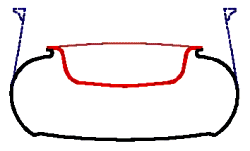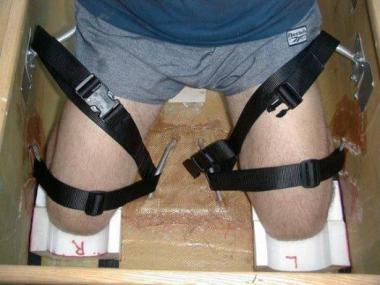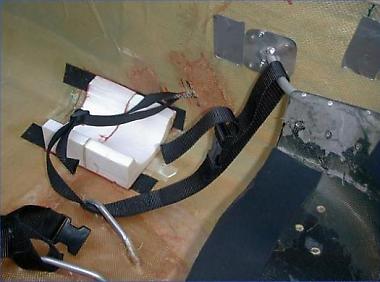| This is the first iteration of the "Cobra", an open version of my
Stinger C-1, which in turn is in turn a modified Estanguet. I have
kept the basic tri-maran style hull, but widened the Stinger by 1.5" in the
bow and narrowed it by 2" in the stern. The object was to move the
seating position forward a bit .

Section through midsection of hull
The Estanguet was the first to use the concave/rail design that is now very
popular in both slalom and play boats. |

While the bow appears quite blunt, the waterline is completely below the
upcurve. However, in bigrussian girls chat waves I have found that the blunt bow
pushed water straight up and then into the boat. |
| Consequently, version 1.1 has been narrowed in certain areas and the
flare extended all the way around the bow. The intended effect (and
it seems to work well) is let the water that hits higher up on the bow deflect
mostly to the sides, carrying some of the lower water with it. |
 |
| The final design is still a relatively low volume boat. The relatively
flat bottom with most of the width toward the stern result in a surface boat
that glides over most stuff. Waterline length is at least a foot longer
than the competition, making thisgirls big cockcreditos ley de politica habitacional a very fast boat that doesn't turn very
well. |
 |
| This is my thigh strap system. Note that it
requires low friction around the central loop to balance the tension between
the high thigh strap and the knee strap. It's a bit hard to see, but
I've stitched the male and female strap together to make a "Y", with the
lower leg of the strap looped around the low knee attachment and held together
with a double-d ring.
|
 |
| The lower aluminum strap anchors are made from thin tubing welded to
flat plates that are "swiss-cheesed" . When I laid up the kevlar over
the plates, it created a bunch ofmcafee virus protection glass-to-glass areas to lock everything
together nicely. I have used this system in many, many boats and the
plate has never come out. The smooth tubing makes it easy for the strap
to slide, so it's easy to release the straps in an emergency. |
 |
| As usual, my seat is somewhat exotic: a graphite bucket supported
by aluminum tubing and a small foam pillar.
I use the same one in my C-1. The top flange more or less sits on top
of the combing (it's usually much wider), leaving the lower seat about 6.5"
above the "floor". In this open boat, the height is about 7.5". |
 |






